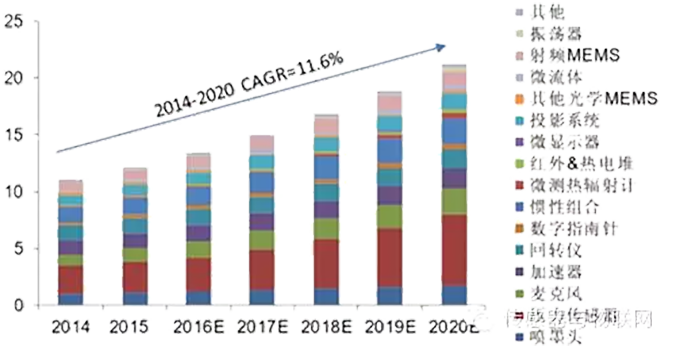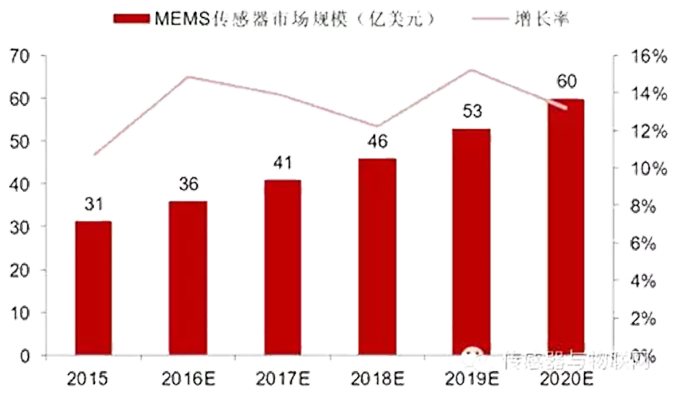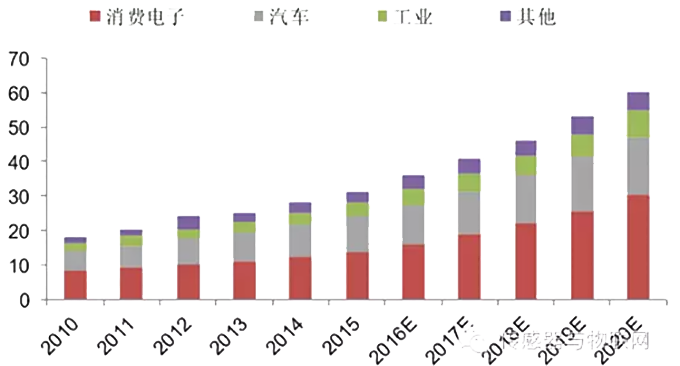MEMS (micro-electro-mechanical system) is developed on the basis of semiconductor manufacturing technology, is the integration of microcircuits and micromachinery on the chip according to functional requirements, based on semiconductor technology such as lithography and corrosion, integrated into ultra-precision machining, and combined with materials, mechanics, chemistry, optics, etc. Make a millimeter or micron level MEMS system with accurate and complete electrical, mechanical, chemical, optical and other characteristics.
MEMS is a micro device that integrates microelectronic and mechanical technology
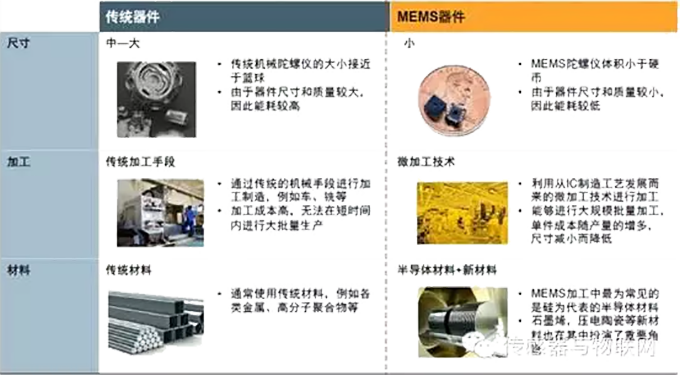
MEMS devices mainly include sensors, actuators, micro-energy, etc. Sensors are relatively mature, and actuators and micro-energy are mostly in their infancy:
Sensors: MEMS sensors are currently more mature MEMS devices, including pressure sensors (you can also measure air pressure and height through pressure sensors), inertial sensors (accelerometers, gyroscopes, geomagnetic sensors, or two-in-one, three-in-one combination), MEMS microphones, environmental sensors (temperature and humidity), thermal radiation, and so on. Among them, inertial sensors and MEMS microphones have almost become the standard equipment of new equipment, and the application of temperature and humidity, pressure and other sensors in mobile terminals, especially some wearable devices, is also expected to be rapidly rolled out.
Actuator: MEMS actuators also have some more mature applications, such as flow control (inkjet head), BAW (bulk acoustic wave) filters in RF devices, BAW diplexers, etc., but a large number of future application scenarios are not limited to this. For example, MEMS oscillators/resonators, MEMS speakers, MEMS cameras, MEMS mirrors (for the field of microprojection), etc.
Micro-energy: MEMS fuel cells have a high energy density, and replacing current mobile phone batteries with MEMS fuel cells can extend the theoretical battery life to several weeks, but the current cost is as high as about $300.
The application stage of each MEMS device (red = sensor, blue = actuator, purple = microenergy)
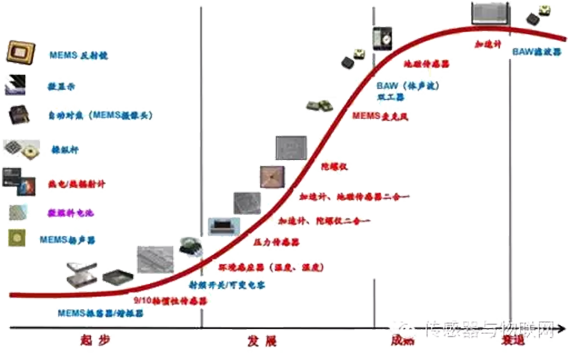
MEMS has the advantages of small size, light weight, low power consumption, good durability, low price, stable performance, etc. The unique characteristics of MEMS system make it have application potential in many fields, although there have been many applications, but overall MEMS market is still in its infancy, and a large number of MEMS systems still have broad market potential. Globally, the current market size of MEMS is about $12 billion and is expected to reach nearly $20 billion in 2020, with a compound annual growth rate of 11.6%, far exceeding the single-digit growth rate of the traditional semiconductor industry. Among them, the combination of inertial sensors and microdisplays will show rapid growth. Overall, MEMS sensors have a wider range of application areas and products, accounting for more than 70% of the overall MEMS market. With the maturity of MEMS actuator production technology and the increase of application scenarios, rapid growth will also be achieved in the future.
MEMS Global Market size (USD billion)
Due to the gradual transfer of the hardware innovation market to the domestic market in recent years, the growth rate of the demand for MEMS sensors in the Chinese market is much higher than that of the global MEMS market, about 13.9%, and the total market size will be nearly $6 billion by 2020.
China MEMS sensor market size
MEMS is currently mainly used in consumer electronics, automotive and other fields, with the continuous maturity of products, aerospace, medical and industrial applications are also gradually popular.
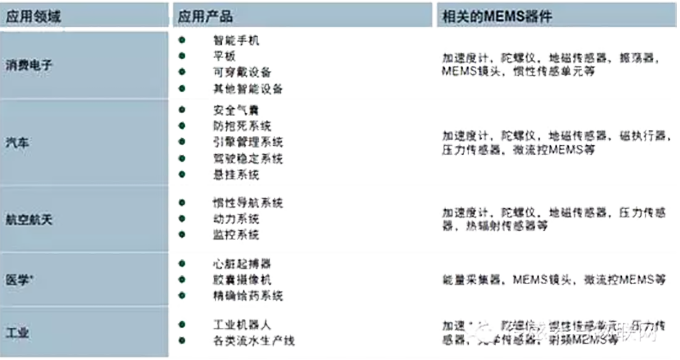
In 2010, the MEMS market began to enter a period of rapid growth driven by MEMS microphones, inertial sensors, etc., from the perspective of downstream applications, the current automotive and consumer electronics are the most important application areas, and from 2010 to 2015, the compound annual growth rate of automobiles was 6.8%. That's higher than consumer electronics' 5.1%CAGR. MEMS is the electronic component with the greatest growth potential in the next few years, indoor navigation, background recognition, keyword recognition, full-time power on, full-time listening, more accurate action recognition and other functions have put new demands on MEMS. Due to the rapid basic innovation in the field of consumer electronics, MEMS has also become an important innovative basic component, and the rapid growth of downstream applications is still the consumer electronics field, with a CAGR of 10.9% from 2015 to 2020. From 2015 to 2020, the CAGR of automotive, industrial and medical will be 4.3%, 7.7% and 11.8%, respectively.
Total Global MEMS Market by Application Category (US $100 million)
In terms of downstream applications, automotive and consumer electronics are also the main growth drivers, with CAGR of 12.4% and 10.6% respectively in the automotive and consumer electronics sectors from 2010 to 2015. In the next five years, due to the rapid process of localization of China's consumer electronics and automotive industry chain, it will still maintain rapid growth, and the compound annual growth rate of consumer electronics is forecast to reach 17.2%, and the growth rate of automobiles is 10.3%.
China MEMS Market by Downstream Applications (US $100 million)
Cited in: Sensors and the Internet of Things


